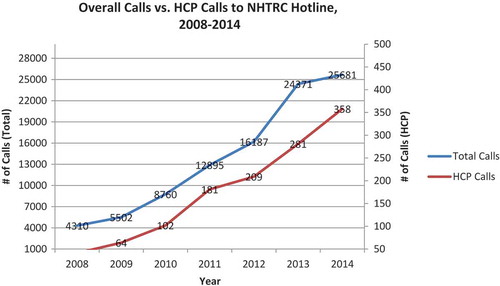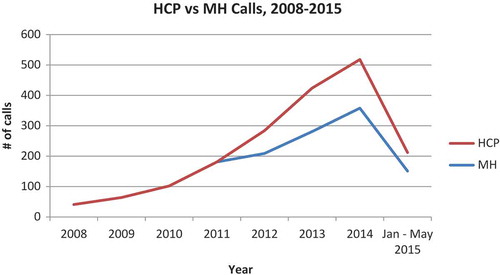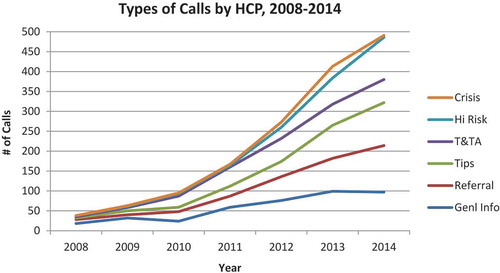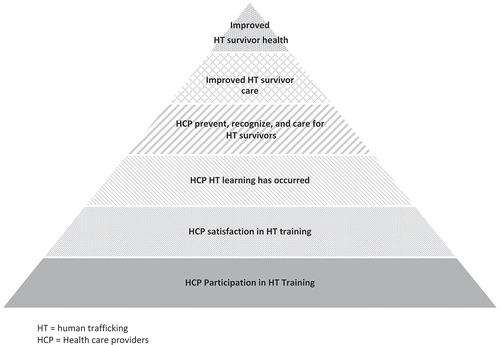Figures & data
Figure 3. Reasons for health care provider (HCP) calls to NHTRC.
The NHTRC utilizes seven distinct categories to describe a caller’s reason for contacting the NHTRC and track substantive calls received through the hotline. Substantive calls exclude hang ups, wrong numbers, missed calls, and calls where the caller hangs up or is disconnected before the purpose of the call can be determined.
General Information Requests: This category includes calls requesting general information on the issue of human trafficking, such as legal definitions, scope, statistics, trends, and prevalence.
Direct Services Referral Requests: This call category includes requests for direct service referrals for survivors of human trafficking. Referrals may include contact information for service providers, law enforcement, coalitions and other collaborative efforts, and other relevant agencies or field practitioners. The most commonly requested referrals are for case management services, shelter services, legal services, mental health or medical services.
Tips: This category includes calls received from individuals who wish to report tips related to human trafficking victims, suspicious behaviors, and/or locations where human trafficking is suspected to occur. Potential human trafficking tips received by the NHTRC are reviewed by hotline supervisors and regional specialists before being passed on to the appropriate local, state, or federal investigative and/or social service agency equipped to investigate and/or respond to the needs of victims. Not all tips are reported to law enforcement, and any reports made respect callers’ preferences regarding confideniality. Reporting decisions are based on a variety of factors, including the callers’ needs and wishes, and the needs and wishes of victims.
Training & Technical Assistance (T&TA): T&TA requests include but are not limited to: specialized information; programmatic and project support; phone consultations; materials reviews; and trainings and presentations.
At-Risk: This category refers to calls referencing related forms of abuse and exploitation that may put individuals or specific populations at risk for human trafficking, such as labor exploitation, domestic violence, sexual assault, child abuse, and runaway/homeless youth.
Crisis Calls: This category includes calls received from victims of human trafficking in need of immediate assistance or from an individual calling on behalf of a victim in need of immediate assistance or emergency services. The NHTRC has developed extensive crisis protocols and local emergency referral and reporting networks to ensure that NHTRC staff are able to provide an immediate and tailored response to crisis calls.
Unrelated: This call category refers to calls that are outside the scope of NHTRC services. NHTRC Call Specialists refer callers to other national hotlines, service providers, or coalitions that are best equipped to fulfill their request.
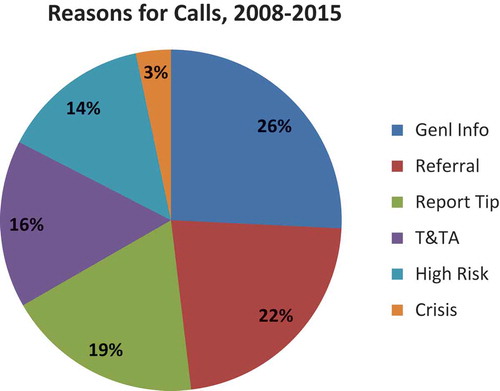
Table 1. NHTRC number of HCP calls by state, 2008–2015.

